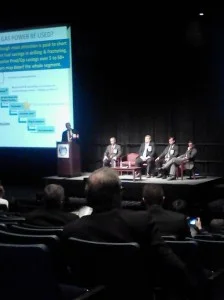QEP Resources acquired its South Antelope Properties in the fall of 2012 for ~$1.4 billion.
Since the acquisition, QEP's value estimate for those properties has increased to $2.8 billion based on probable reserve estimates.
Read more: QEP - Helis Bakken Deal Agreed for 27,600 Acres for $1.4 Billion
QEP Bakken South Antelope Properties
Since the acquisition of its South Antelope properties, QEP has lowered its development costs and increased production.
Current gross completed well costs have decreased by more than $1 million from estimated costs at the time of acquisition.
In spite of delays due to downstream and weather-related issues, current South Antelope oil production grew in 2013.
“Our South Antelope acquisition is a great example of our sound and stringent capital allocation process,” commented Stanley. “We are pleased to see that the assumptions made in our South Antelope acquisition have proven to be accurate and conservative.”
QEP Production and Proved Reserves for 2013
QEP total equivalent production in 2013 was 309 bcfe and oil production was 10.2 million bbl. Natural gas and NGL production was 218.9 bcf and 4.8 million bbl respectively.
2013 year end total proved reserves were 2.55 tcf of natural gas, 148.6 million bbl of crude oil and 102.6 million bbl of NGL. That's a 37% increase of total proved reserves at year end 2013 compared to 2012.
At the end of 2013, QEP's Williston Basin proved reserves were estimated at 797.5 bcfe or ~140 million boe.
Highlights
- QEP Resources South Antelope property valued at $2.8 billion
- QEP total equivalent production in 2013 was 309 bcfe and oil production was 10.2 million bbl
- Proved crude oil reserves at 149 million barrels. Up 25% from prior year
- 37% increase in total proved reserves
- Williston Basin contributed more than 140 million boe in reserves
* Extensions and Discoveries: As to any period, the increases to proved reserves from all sources other than the acquisition of proved properties or revisions of previous estimates.
Read more at QEP.com






